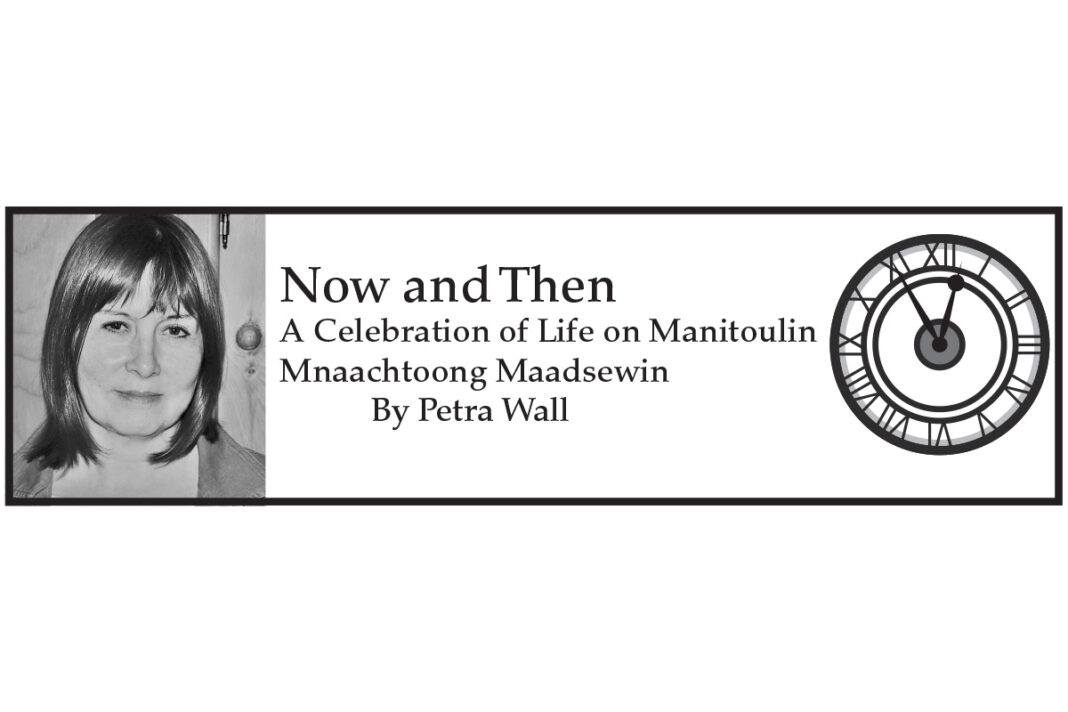Craig Timmermans has fine-tuned thinking ‘outside the box.’ Technological issues have always inspired a keen sense of problem solving and innovation. He was the first person to bring the internet to Manitoulin. He has the first Canadian green radio station, which is completely off the grid and virtually run by solar and windmills. He and his partner Kelly built a domed stage on Harbour View Road to accommodate star-studded entertainment for several hundred participants. They have brought in many talented artists including Johnny Reid, Dwight Yoakum, Terri Clark, George Canyon, and many others. Craig is currently finishing the couple’s home which is completely off the grid as well, supported by 27 solar panels, neatly stacked on the south side of the home. He still has a goal to explore alternate forms of energy that will be more optimum and efficient for future generations.
We sit in the ‘power’ office of the radio station and Craig begins to share his story. “I never met my maternal grandparents in England. My paternal grandfather, Frank Timmermans, was a paymaster for the Dutch Royal Army and a barber in the First World War before he got off the boat on Halifax’s Pier 21 in Canada. Grandfather became a barber in Blind River. The name Timmermans with an ‘s’ was historically used to identify ‘boat builders.’ The same name without the ‘s’ referred to a ‘carpenter.’”
“My father Gerry Timmermans was a wireless gunner in World War Two. He sat in the back of a fighter plane under a glass dome, a rather risky position. He was stationed in England where he met my mother, Elizabeth Ashton, a nurse from Leeds. They married in England and moved to Blind River, where his father, my grandfather, lived,” Craig adds. “I recall his early story about having to work a full weekend just to get enough money to buy four eggs.”
“Later they moved to Little Current where my father became a ‘Customs Officer,’ processing arriving boats or goods that had to go through customs. Dad also started ‘Tim’s and Company’ which is the ‘Rona’ store today. We lived beside a building that is the funeral home today. Wintertime, an old wood stove that heated our whole house needed a constant supply of wood. One night we let the fire go out. In the morning, the stove-top coffee pot was frozen solid.”
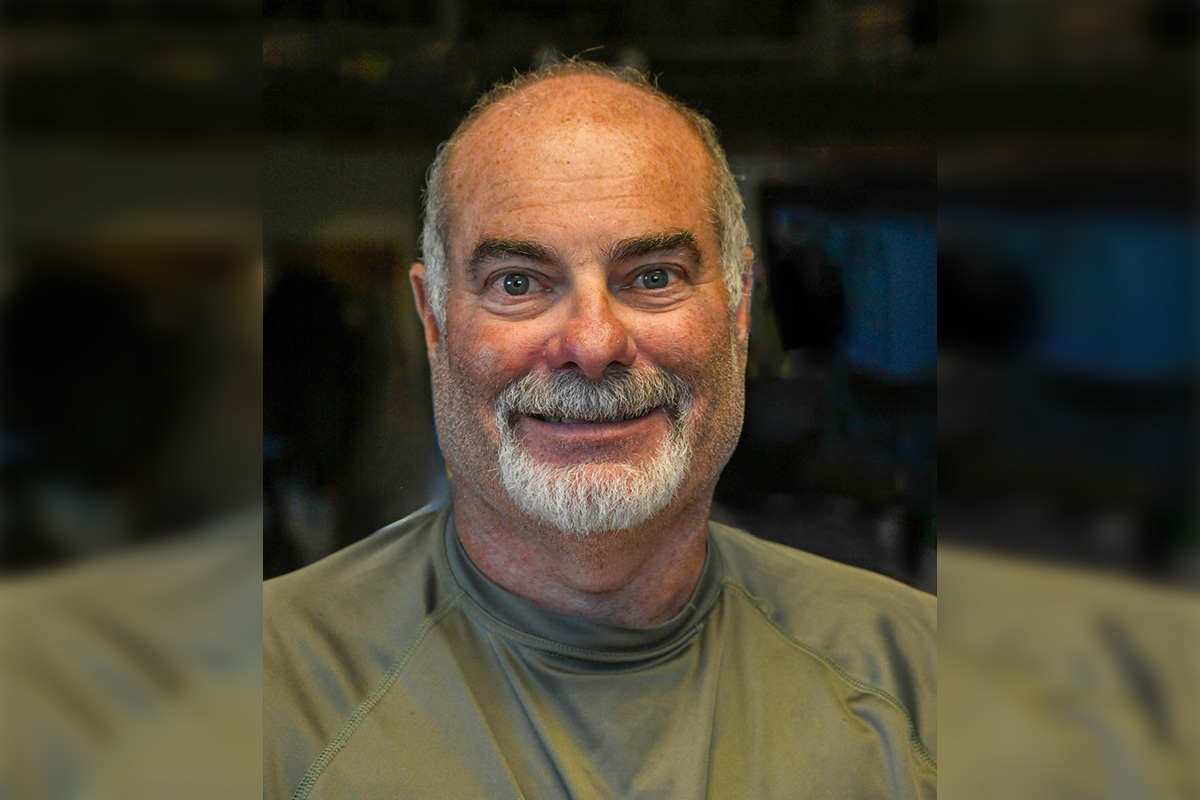
Craig was born on January 18, 1963. “My parents were in their mid-40s by then and my brother Bob and sister Cathy were moving out. Bob moved to Vancouver and went into sales. Cathy married David Andrews who was a crane operator for Ontario Hydro at the Bruce nuclear plant. Today, Cathy and David’s son Todd is an “IT” specialist in Florida and their other son, Brett works for Hydro One in Port Elgin.”
“Julia (Miss Rutledge) McCutcheon was my Kindergarten teacher. She was genuinely nice. We got cookies and milk for our snacks. Our school was on the hill beside Gary’s Restaurant. A church is there now. I started building things in grade two. One was a Christmas tree light tester. When the little pad I created lit up, we could tell which lights had burned out. That year, a man in a suit came to evaluate me. He pulled me out of class and had me draw a battery, a light, and a switch. Then I had to connect them and combine several batteries as well. A month later, he wanted to send me to a ‘special’ school in Ottawa, but I was just seven and I didn’t want to go. I cried. I didn’t want to leave my family and friends, and my parents agreed.”
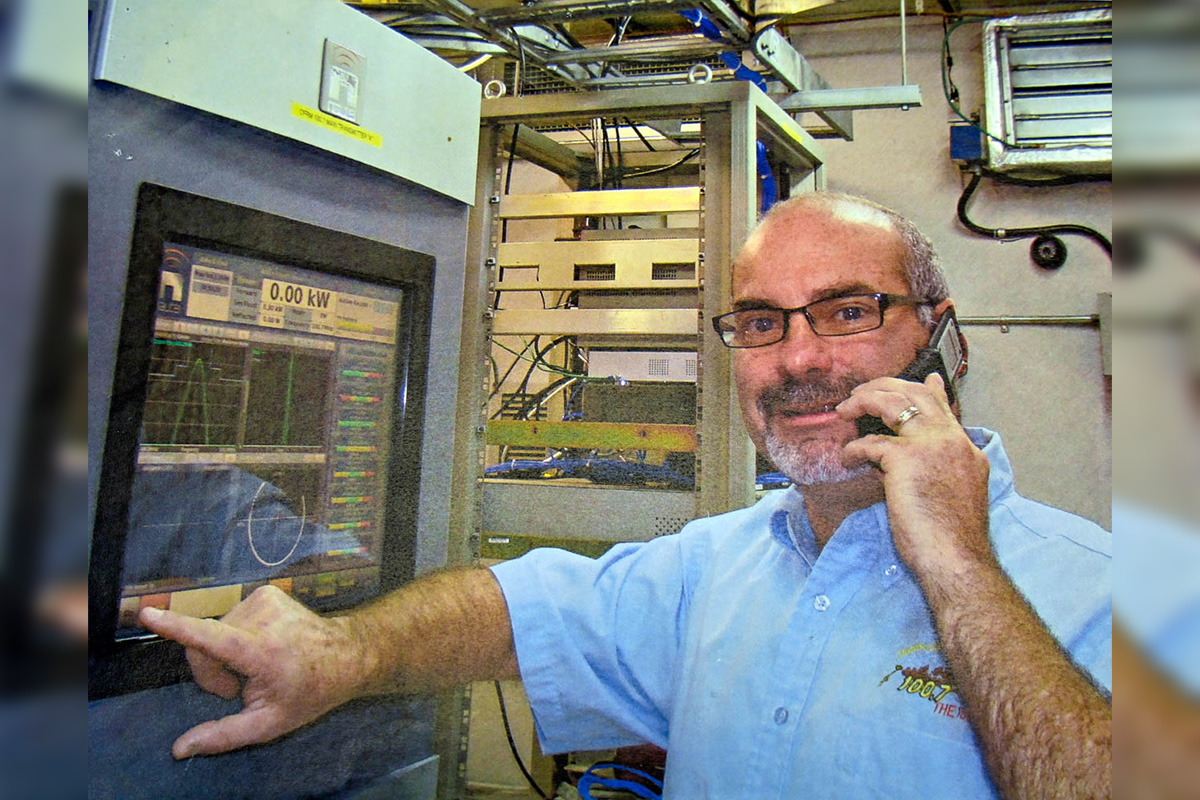
“I continued to look for technical challenges. Marcel Gauthier needed his high-tech digital calculator fixed. It was expensive. I was ten and he trusted me enough to check it out. I took it apart and fixed the connection with the battery. He was happy. That same year, I built a tree house in our front yard, and I wired it for lights. I also put in a pulley and winch system so we could lower the basket down for sandwiches, milk, and cookies. I could treat friends to lunch in the trees.”
“At 13, I longed to have my own radio, but dad said no. He felt he had been too lenient with my siblings, so he was stricter with me. ‘If you want something, go and work for it,’ he told me. I went to the public library and researched ‘crystal’ radios. I built one and it did pick up a couple of stations, but I wanted a better one. One day after school was out, I visited the local television and radio repairman, Don Patrick. He had a shelf full of old tube radios and he taught me how they worked. I took a few of his old radios and got some more at the dump to make one radio out of all of them. I was thrilled to get a rock and roll station in Michigan.”
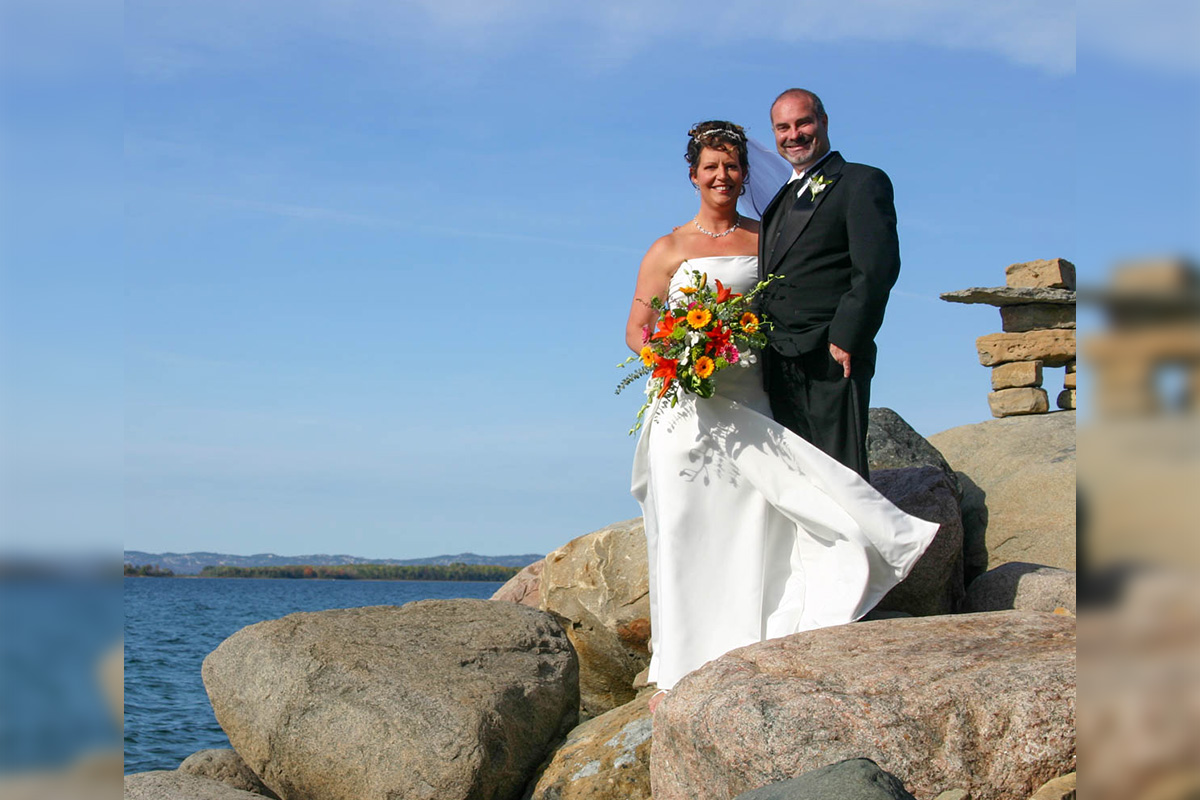
“At 14, I went back to the dump for a few old televisions. Greg Newson and I made one working television from all the parts. It was black and white, ran on batteries and used an antenna attached to the chimney outside. The big picture tube and all the insides were exposed but we were the only kids with a television in 1976. In 1977, I built my first computer as detailed in an Expositor article on August 17, 1977.”
“In public school, science was my favourite subject. There were lots of drawers with light bulbs and switches in the science room, and I loved making things with these items. I also found some old wires and relay systems at the Bell Canada office.” Craig’s friend Kim Hanninen was overwhelmed by all the radio parts. She had confessed she had been happy to draw a line with her ‘Etch and Sketch,’ so she was grateful to learn more about computer parts and relays in a way that was understandable for novices.
High School (MSS) offered classes in automotive topics, drafting and electronics. Electronics was taught by John Moon who is now head of research at Cambrian College. Craig began work on a ‘sand battery,’ a method of storing excess energy in sand, a form of thermal storage. He is still working on this project which would offer heat to homes in winter from excess energy in summer. “I did well in subjects that interested me at high school, but I ‘sucked’ in my other classes. If I couldn’t see a purpose for grasping a subject, I had no incentive to learn it and let it take up brain space.”
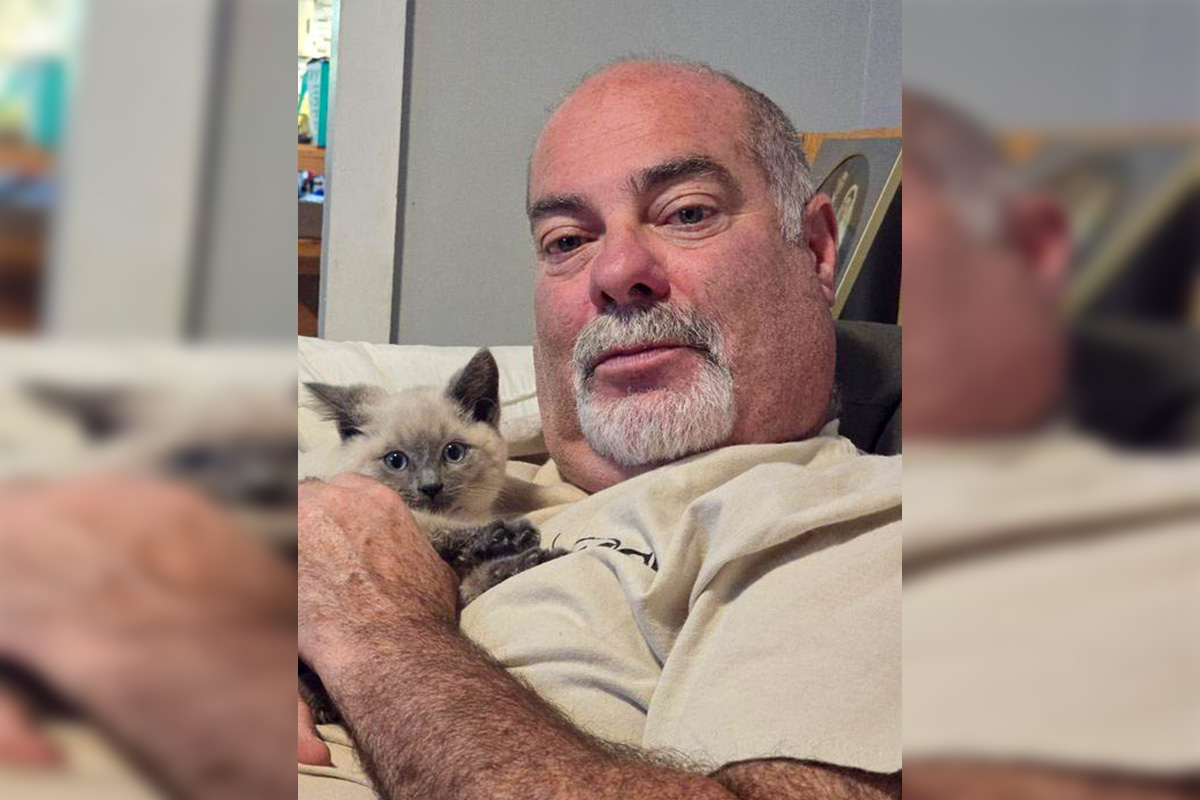
Craig spent six years at Cambrian College becoming an electronic engineering technologist. He added instrumentation engineering which dealt with controlling processes, for instance, controlling the steps at a nuclear power station. “I took a fancy to setting up PLC’s (programmable logic controllers) in my Instrumentation class. General Electric would be using PLC’s. PLCs could also control water levels in huge water tanks.” After a while, Craig sought further stimulation for a higher system complexity of controls. His teacher, Gary Brown, recognizing this need to do more, asked Craig to help teach some of the other students. Craig enjoyed instructing other students and helping them solve unique problems.”
After completing six years of academic studies, Craig started his computing business, MSD’ in Little Current. “I brought in a Panasonic fax machine and put it into the hospital system. It was the first fax machine on Manitoulin and the speed of the response was excellent. The staff was impressed with this useful addition to their administrative role.” Craig took a hiatus from running MSD when he got a temporary job offer from ‘Computerland’ in Sudbury. It was the largest computer sales and service organization in Canada. “I dealt with IBM, Compact, Toshiba, HB and Apple for about five years.”
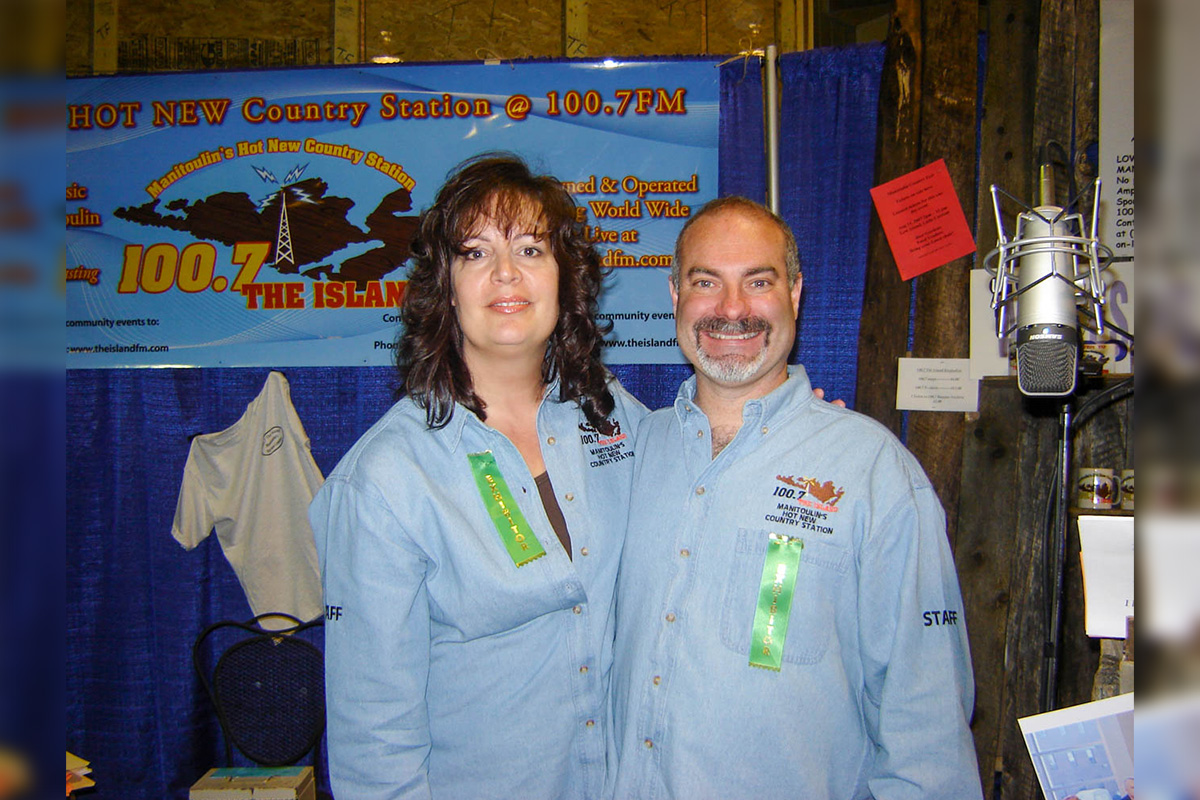
“Computerland games, collected from across Canada, were also on the agenda. Games had to be formatted and fixed in labs, requiring specialized expertise.” At that time Craig was one of the top three technicians in Canada. The Memorial Hospital in Sudbury had a problem with their top-level Novell systems. “The technicians were to arrive in three-piece suits, but their Novell expert arrived in a Batman T-shirt. They gave him clearance because of his expertise. Nevertheless, he failed to fix the system after a week. I took some of the software home, set it up, figured the system out and was able to repair it.”
Craig was asked to deal with some special projects after that. “I worked on the IBM ‘red track’ ball and the design of some Pentium processors, such as the Pentium 90 (90 MHz). I recall that the lab in Toronto where this was done. It used to get extremely hot. You could heat your coffee on top of the computer.” IBM wanted to keep him in Toronto, but Craig wanted to get back to Manitoulin, so he politely declined the offer. He came home and reinstated MSD, with the same goals, but now the computers were repaired in people’s homes. Mike Erskine and Iain Stephens helped with ‘IT’ at the time. It was a busy store because the Internet was gaining traction quickly. E-mail, a bulletin board, and ‘Wildcat BBS’ services were offered. Parents could dial in and connect with their offspring at college or university.”
“I was also determined to figure out how the internet worked. I used computers, wires, and cables to help me figure out IP addresses. I could talk to others in the office, but what about the world? The main super internet highway was ‘Universal Unlimited Internet Canada.’ In 1988 the internet was still in its infancy stage. We were able to connect to this highway using telephone lines. We were the first internet provider to Manitoulin and Espanola. A ‘switch 56 line’ got me to Toronto from Espanola. Long distance calls to Espanola were set up from a local line here to another local line closer to Espanola. We set up the Wiky band office connection to the Health Center and the school. Pontiac School connection was by satellite, our first foray into wireless internet. We also sold internet to Via Net. Everything was so new, but the evolution of advanced technology continued to evolve.”
“The first radio station on Manitoulin started in 2000. We began with an application to CRTC to get approval for the station. Walter Hume owned North Channel Broadcasting where my MSD ads and other local advertisements were being broadcast. He said he was ‘not a fan’ of a new ‘competitive’ radio station. This gave me motivation to proceed. When I started to broadcast on a trial basis to assess interest, Hume complained to the CRTC. The CRTC knew it was me broadcasting and they asked me to turn off the transmitter until I got approval. I did. It took five years to get approval for the 1.8-watt Rock Station we started. Today it is broadcasting at 27,500 watts. In 2016, we added the second station, Country 103 at 50,000 watts.”
In 2006 Craig met Kelly on a dating app called ‘Plenty of Fish’ where each partner could look for specific traits in the other. After six months of correspondence, Kelly moved from Edmonton to Little Current. “We were naturally attracted to each other and were soon married by an Anglican minister at the family home at White’s Point. The minister was on the beach and amazingly, the wind stopped at the right time, leaving the water as smooth as glass. We had the reception at the Legion. Kelly became ‘KT’ and a ‘natural’ broadcaster for the radio station.”
In 2009 they had increased the radio broadcasting power from 50 watts to 1830 watts and Craig was shocked to get his first hydro bill. “It was about $1700 so I began to think about green energy. That same year, three wind turbines were purchased to create electricity for the radio station, making it the first of its kind in Canada.”
In 2007, Country Fest was initiated after the big Haweater Weekend, when all had quieted down again. It started with Kelly’s input and ideas. The festival began in Low Island for the first five years and moved to the Country Fest Grounds in 2012 where a stage had been built to hold the big names that would entertain there, including, as mentioned, the likes of Dwight Yoakum, Terri Clark, George Canyon, and Johnny Reid. Country Fest is a ‘Not-for-Profit’ operation with any extra proceeds going to charity. Examples of donations include: the call-bell system at the local nursing home, a new sound system for the NEMI Recreation Center and $10,000 to $15,000 support for our hospital and Manitoulin Streams.
Craig and Kelly are building their ‘off-grid’ home on 30 acres beside the Country Fest Grounds. Craig’s son Carson, from his first marriage, will live on the same property in his own home. Carson shares the same keen intellect for technology as his dad. He took computing science in Ottawa at Carleton. Carson, 27 now, lives with them in a separate apartment at the old MSD site and will move when his house is ready. Carson does ‘IT’ and phone support for the Spectrum Group in Sudbury.
“Were you named after anyone? My name is Walter Craig Timmermans. Walter was my uncle’s middle name too.” “Most important event in your life? I always wanted a partner who would have the same interests and work with me, in a close relationship, like my hand-holding parents had. I have that person in Kelly.” “A goal you had early in life? I always wanted to develop something new that everyone could use like the internet we brought in and the ‘green radio station’ CFRM. I hoped to get Manitoulin into the Tech Era.’ We accomplished that but Kelly put us on the map with her festivals. The Island is now known for its festivals which have annually attracted about 8,000 people.”
“Favourite pets? Cinders our older feline and Diesel our current Siamese cat.” Responsibilities as a child? “Shoveling coal into our basement in Little Current.” Favourite season? “It used to be summer, but summers are getting too hot, and the dwindling ozone layer may be a medical problem. I like the shoulder (cooler) seasons better now. We are focusing on green energy because we feel that the electrical grid could become more unstable with electric cars and weather changes. Being off the grid helps us avoid that concern and gives us energy ‘security.’”
Favourite television or radio show?
‘The Big Bang Theory and our radio station.” Favourite sport? “Jogging and track and field.” Any awards? “Certificate from IBM for their ‘red tracker system’ and a certificate from the House of Commons for the radio station, green energy and the festivals. Carol Hughes helped with the recognition of these.” First hourly wage? “$2.45 from the Red and White store in Little Current. I stocked shelves and delivered food.” Your strengths? “Tenacity to solve technical problems, technical skill and thinking outside of the box.” What did you enjoy most as a parent to your son? “Teaching him technology and working on a car. He helped me in the garage and can now work on his own car, in addition to the IT work he is doing for his company.” Associations involved in? “The Association of Electrical and Electronics Engineering, Canadian Standards of Broadcasting Association and the Canadian Country Music Association.”
Something you still want to do? “Develop an alternate energy source, a type of ‘fusion’ system. ‘Higgs Boson’ Theory states that there is a ‘universal energy’ that holds anything with ‘no mass’ together and keep it from flying apart. For instance, we might be able to harness the energy that holds atoms together.” What are you most proud of? “My partner and my ability to resolve problems.” What are you most afraid of? “Cancer.” If you could keep only three things from your current life, what would you keep? “My multi-tool knife, a solar panel, and my cell phone.” Recipe for happiness? “Finding that ‘one-in-a-million’ compatible partner who is on the same page as you.” Any recommendations for our youth? “Always have an open mind and believe in yourself that you can do anything, but hard work is mandatory. You can’t get by without it.”
Going back in time, is there anything you would change or do differently? “When they wanted me to go to that special school in Ottawa, I could have gone, looking back.” Did you realize the dream you had as a small child? “Yes, I reached them and exceeded some.” Is there something you might spend less time doing? “Worrying about things I can’t change.” Any people who inspired you? “Don Patrick for the radios and my mother who was an easygoing, caring, and loving person.” Traits you admired in others? “Nickolai Tesla, the inventor of Direct Current (DC) motors, the transmission of electricity that should be free for everyone.” Problems still around 100-years from now? “Environmental problems and food security.”
“Manitoulin is home. I’m a Haweater and always will be. When you cross the bridge, life slows down and the pace changes. Here, life is peaceful and tranquil. This slower pace allows real creativity to shine and there is less tendency to become overwhelmed. The radio stations and the festivals will be our legacy. I’ve lost a lot of good friends over the years and this makes me realize that life is short, and it is important to treasure your friends. I intend to spend the rest of my life here with my family and friends on Manitoulin Island.”

